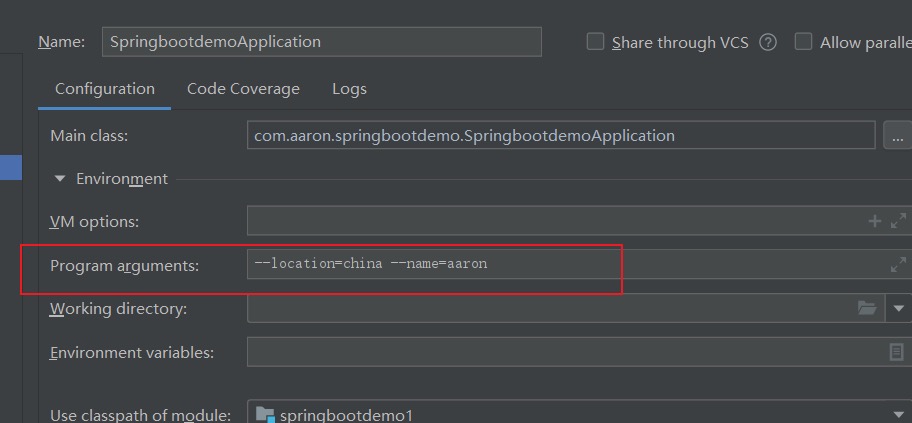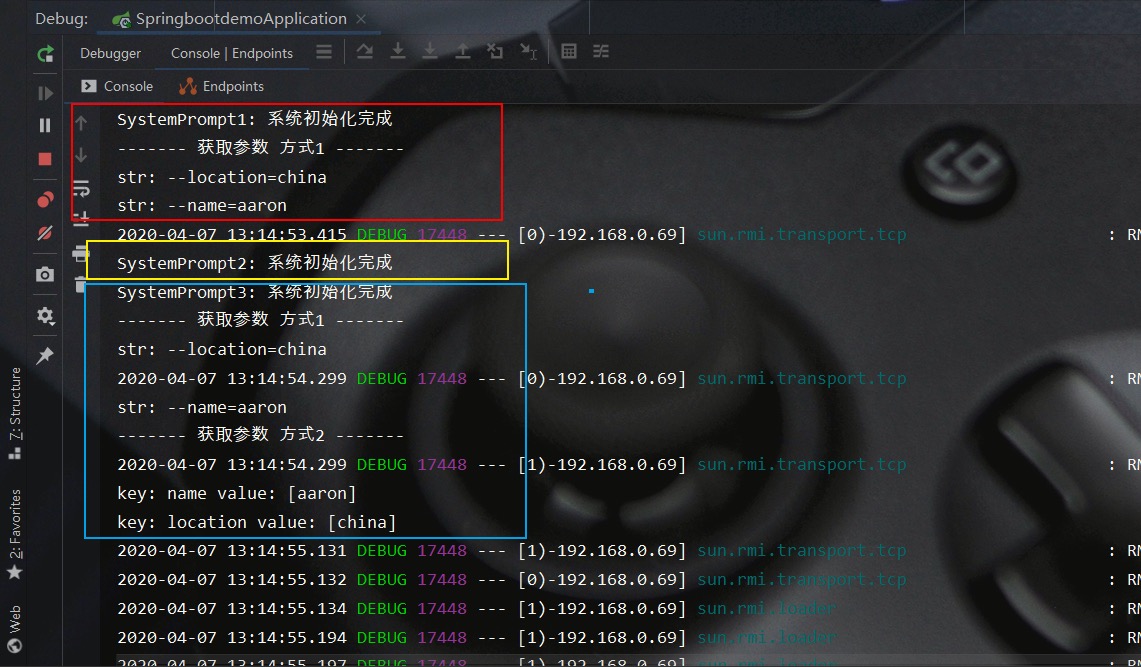一般项目在部署启动后,需要执行一些诸如清除缓存等初始化的工作,虽然可以通过人工手动调用接口等方式完成,但是会容易遗漏,且不够优雅。这里推荐使用SpringBoot的Runner启动器,其会在服务启动后自动地执行相关初始化任务

CommandLineRunner、ApplicationRunner接口
SpringBoot提供了两个Runner启动器——CommandLineRunner、ApplicationRunner接口。二者实际上并无太大区别,只是前者是通过数组接收启动参数而后者则是将启动参数封装到ApplicationArguments对象中。实际开发过程中只需在接口的run方法中实现我们的初始化操作即可。当然不要忘了在启动器类上添加@Component注解
1
2
3
4
5
6
7
8
9
10
11
12
13
14
15
16
17
18
19
| @FunctionalInterface
public interface CommandLineRunner {
void run(String... args) throws Exception;
}
...
@FunctionalInterface
public interface ApplicationRunner {
void run(ApplicationArguments args) throws Exception;
}
|
实践
我们以项目启动后打印相关信息为例介绍其用法,这里我们有3个Runner启动器类。当有多个Runner启动器时,可通过@Order注解指定执行的优先级顺序,数值越小,优先级越高,越先被执行
1
2
3
4
5
6
7
8
9
10
11
12
13
14
15
16
17
18
19
20
21
22
23
24
25
26
27
28
29
30
31
32
33
34
35
36
37
38
39
40
41
42
43
44
| @Component
@Order(1)
public class SystemPrompt1 implements CommandLineRunner {
@Override
public void run(String... args) throws Exception {
System.out.println("SystemPrompt1: 系统初始化完成");
System.out.println("------- 获取参数 方式1 -------");
for(String str : args) {
System.out.println("str: " + str);
}
}
}
...
@Component
@Order(value = 2)
public class SystemPrompt2 implements CommandLineRunner {
@Override
public void run(String... args) throws Exception {
System.out.println("SystemPrompt2: 系统初始化完成");
}
}
...
@Component
@Order(value = 3)
public class SystemPrompt3 implements ApplicationRunner {
@Override
public void run(ApplicationArguments args) throws Exception {
System.out.println("SystemPrompt3: 系统初始化完成");
System.out.println("------- 获取参数 方式1 -------");
for(String str : args.getSourceArgs()) {
System.out.println("str: " + str);
}
System.out.println("------- 获取参数 方式2 -------");
for(String str : args.getOptionNames()) {
System.out.println("key: " + str + " value: " + args.getOptionValues(str));
}
}
}
|
然后,我们在 IntelliJ IDEA 中添加项目的启动参数

启动后测试结果如下所示,Runner启动器相互之间的顺序符合我们的预期

在ApplicationRunner中,main参数即可通过getSourceArgs()来获取原始的字符串数组,也可以通过getOptionNames()、getOptionValues(String name)方法分别获取参数的名称集合、指定名称参数的值(值的类型为List<String>)



